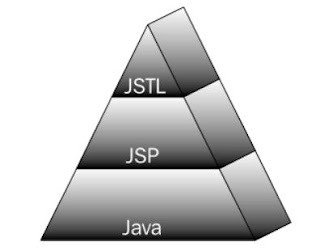Evolution of JSTL:
Java is a flexible, general-purpose programming language, JavaServer pages(JSP) depends on java but hides some of the hard details of writing full- fledged programs.
The JSP Standards Tag Library(JSTL) builds on top of JSP, making it even easier to use.
In this figure large web applications are designed using java, JSTL, and othe components like databases.Architecture:
In large applications, it's common for requests from web browser to be handled by a java program called a servlet, which interacts with databases and other Java code on the server.
The servlet figures out how it wants a response be printed and then forwards the user to the right JSTL page, which takes care of nothing more than presenting information.
As JSP grew in popularity, it became clear that different sites' custom tags fell into familiar, frequently used patterns.
For example, many pages needed to loop over data to print tables and lists.
Vendors of JSP containers and members of the open-source community tried to address these needs by providing collections of tags -- tag libraries -- that solved common problems.
While many JSP page authors used these libraries, nothing tied them together. To address this fragmentation,
the Java Community Process -- the same group that now maintains and standardizes JSP itself -- decided to offer a standard tag library.
JSTL 1.0, to include tags for the following common tasks: •Looping over data to produce tables, lists, etc.
•Conditional operations
•Importing and processing data from other web pages
•Simple XML manipulation
•Database access
•Text formatting and internationalization


Comments
Post a Comment